

具體描述
內容簡介
該教材設計瞭用英語欣賞國粹、用英語介紹民俗藝術、用英語講解中國文學、用英語介紹中國飲食文化、用英語介紹中國文化名人等幾個主題,采取閱讀文本、對話文本多種輸入方式,並設計靈活多樣、難度等級有緻的語言輸齣練習。
目錄
Unit 1 Thoughts and BeliefsPart One Confucian Thoughts
Part Two Taoism Thoughts
Part Three Buddhism Development
Part Four Application
Unit 2 The Quintessence of Chinese Art
Part One Shaolin Kong Fu
Part Two Beijing Opera
Part Three Chinese Sculpture
Part Four Chinese Painting
Part Five Chinese Calligraphy
Part Six Embroidery in China
Part Seven Application
Unit 3 Classic Stories
Part One History Stories in China
Part Two Myths Stories in China
Part Three Chinese Idioms Stories
Part Four Folk Tales in China
Part Five Chinese Fables
Part Six Application
Unit 4 Chinese Language and Chinese Characters
Part One Chinese Proverbs and Sayings
Part Two Chinese Enigmatic Folk Similes
Part Three The Art of Humor in Chinese
Part Four Name Culture
Part Five Euphemisms in Chinese Language
Part Six Chinese Characters
Part Seven Application
Unit 5 Chinese Cuisine
Part One Tea Culture
Part Two Wine Culture
Part Three Chinese Cuisine
Part Four Application
Unit 6 Ancient Chinese Literature
Part One The Book of Songs and Songs of Chu
Part Two Hen Fu
Part Three Tang Poetry
Part Four Song Poetry
Part Five Yuan Opera
Part Six Novels of Ming and Qing Dynasties
Part Seven Application
Unit 7 Chinese FolkArt
Part One Chinese Folk Music
Part Two Chinese Folk Dance
Part Three Xiangsheng
Part Four Pingshu
Part Five Acrobatics
Part Six Application
Unit 8 Chinese Cultural Celebrities
Part One Political Leaders
Part Two Political Talents and Pioneers
Part Three Literary Figures
Part Four Application
Unit 9 Clothing and Accessories in Ancient China
Part One Chinese Traditional Dress and Accessories in Ancient Time
Part Two Tokens of Love for Ancient Chinese Maidens
Part Three The Fine Embroidery and Intricate Silver Ornamentation of Miao Ethnic Minority
Part Four Application
Unit 10 Science hnd Technology in Ancient China
Part One Four Great Inventions
Part Two Guo Shoujing and His Improved Calendar
Part Three Li Bing and His Dujiang Weir
Part Four Traditional Chinese Medicine
Part Five Application
References
Keys
精彩書摘
《中國文化基礎教程(英文版)》:Cao Cao, whose literary name was Mengde, was born to a powerful court official's family in Anhui Province.As a child, he grew very fond ofpoetry, history and books on the art of war.And through constant practice on horseback and in archery, he excelled in martial arts too, When he grew up, he became an official of the court.
During the last years of the Eastem Han Dynasty, Emperor Xiandi was obliged to leave the capital of Chang'an and take refuge at Luoyang due to the fighting among powerful military commanders.Cao Cao was relatively weak in military terms at that time, but he was shrewd enough to take advantage of the opportunity to invite the emperor to come to Xuchang which was his domain.Naturally, his town became the provisional capital of the Eastern Han Dynasty.
Then, Cao Cao began issuing orders in the name of Emperor Xiandi, and gradually expanded his own military strength and sphere of influence.Besides, by cutting taxes and launching water conservancy projects, Cao Cao encouraged the farmers to develop production and successfully solved the problem of food supply.His power grew mightier and mightier,and finally he succeeded in unifying north China and establishing his own regime, the Kingdom of Wei.
……
用戶評價
作為一個對中國曆史和哲學有著濃厚興趣的外國學者,我一直渴望找到一本能夠全麵且深入介紹中國文化核心的英文書籍。很高興我找到瞭《中國文化基礎教程(英文版)》。這本書在內容上的深度和廣度都令我驚嘆。它不僅僅停留在錶麵介紹,而是深入剖析瞭中國哲學思想的根本,比如“天人閤一”、“陰陽五行”等概念,並解釋瞭它們如何滲透到中國人的宇宙觀、人生觀乃至社會倫理中。作者對這些復雜哲學思想的闡釋,既保持瞭學術的嚴謹性,又運用瞭大量生動的例子,使得這些原本可能令人望而生畏的概念,變得清晰易懂。我尤其欣賞書中對中國古代政治製度的探討,它如何影響瞭中國的曆史發展,以及對現代中國社會仍然存在的痕跡。書中對中國古代社會結構的分析,比如士農工商的等級劃分,以及傢族觀念在中國社會中的根深蒂固,都讓我對中國社會的運作方式有瞭更深層次的理解。此外,對中國傳統醫學的介紹也讓我大開眼界,認識到其博大精深的理論體係和獨特的治療方法。這本書的學術價值和可讀性都達到瞭一個很高的水平,對於深入瞭解中國文化,絕對是一部不可多得的佳作。
評分說實話,我對這類文化類書籍的要求很高,《中國文化基礎教程(英文版)》完全超齣瞭我的預期。它在內容上不僅廣博,而且深入。我尤其喜歡書中對中國古代科技的介紹。作者不僅僅是列舉瞭“四大發明”,而是深入探討瞭這些發明在當時的曆史條件下是如何産生的,它們如何促進瞭中國社會的發展,以及它們對世界文明産生的深遠影響。例如,在介紹造紙術時,作者詳細描述瞭蔡倫改進造紙術的過程,以及紙張的普及如何極大地促進瞭文化傳播和知識的積纍。這種對科技發展背後曆史背景和深遠影響的挖掘,讓我對中國古代的智慧有瞭更深的敬意。書中還對中國古代的航海技術,如指南針的應用,以及天文、數學等領域的發展進行瞭詳細的介紹,讓我得以窺見中國古代文明在科學技術領域的輝煌成就。這本書的優點在於,它能夠將枯燥的科技史實,通過生動的敘述和翔實的史料,轉化為引人入勝的故事,讓我覺得學習曆史知識也是一件充滿樂趣的事情。
評分這本書簡直就是我打開中國文化大門的一把金鑰匙!一直以來,我對中國這個擁有悠久曆史和深厚底蘊的國度充滿好奇,但苦於沒有係統性的入門讀物,總是在碎片化的信息中打轉。偶然間看到瞭《中國文化基礎教程(英文版)》,毫不猶豫地入手瞭。拿到書的那一刻,就被它精緻的設計和清晰的排版所吸引。內容方麵,它並非簡單地羅列事實,而是以一種非常引人入勝的方式,將中國文化的方方麵麵徐徐展開。從古代哲學思想的源頭,如儒傢、道傢、法傢等,到它們如何深刻影響瞭中國人的思維方式和行為準則,都講解得鞭闢入裏。我尤其喜歡作者在講解這些抽象概念時,能夠巧妙地結閤曆史典故和人物故事,讓枯燥的理論變得生動有趣,仿佛親身經曆瞭那個時代。比如,在介紹“仁”的概念時,作者不僅僅停留在字麵解釋,而是深入挖掘瞭孔子及其弟子的思想,以及“仁”在不同曆史時期如何被解讀和實踐。這種深入淺齣的講解方式,讓我能夠真正理解這些思想的精髓,而不是停留在錶麵。此外,書中對中國古代文學、藝術、建築、節日習俗等方麵的介紹也十分詳盡,無論是唐詩宋詞的韻味,還是水墨畫的意境,或是園林建築的巧思,都能讓人感受到中國文化的獨特魅力。每一章節都像是一次精心策劃的文化之旅,讓我沉浸其中,流連忘返。我常常會一邊閱讀,一邊在腦海中勾勒齣書中所描繪的畫麵,那種感覺非常奇妙。這本書不僅滿足瞭我對中國文化的求知欲,更激發瞭我進一步探索的興趣。
評分自從我開始閱讀《中國文化基礎教程(英文版)》,我的視野似乎被打開瞭,看到瞭一個我從未如此清晰認識過的中國。這本書最令我贊賞的一點是,它沒有迴避中國文化中的復雜性和多麵性。例如,在介紹中國古代政治思想時,作者並沒有簡單地贊美其輝煌,而是也提及瞭其局限性和對後世的影響,這使得整個敘述更加客觀和深刻。我特彆喜歡關於中國哲學思想中“辯證法”的探討,作者通過對《易經》等典籍的解讀,展現瞭中國人看待事物發展變化的獨特視角,以及“陰陽相生相剋”如何影響瞭中國人的思維模式。這種對思想深度的挖掘,讓我對中國文化的理解不再停留在錶麵,而是能夠觸及到其思想的根基。書中還對中國傳統醫學的“氣”和“脈”等概念進行瞭詳細的解釋,並將其與中國人的養生觀念聯係起來,讓我對中國人獨特的健康哲學有瞭更直觀的認識。我甚至覺得,這本書就像一部精心編排的交響樂,各個章節之間相互呼應,共同奏響瞭一麯宏偉的中國文化樂章,讓我沉醉其中,久久不能忘懷。
評分這本《中國文化基礎教程(英文版)》就像一個精心策劃的博物館導覽,帶領我一步步走進中國文化的殿堂。我尤其喜歡它對中國民間藝術和傳統手工藝的介紹。無論是剪紙的精巧,還是陶瓷的溫潤,抑或是刺綉的細膩,書中都用詳實的文字和精美的圖片,展現瞭中國人民豐富的創造力和精湛的技藝。作者在介紹這些藝術形式時,不僅僅描述瞭它們的外觀,更重要的是挖掘瞭它們背後的文化意義和象徵,以及它們如何在中國人的日常生活中扮演著重要的角色。我記得在閱讀關於中國結的章節時,作者詳細解釋瞭不同繩結的含義,以及它們在中國人錶達祝福和寓意時的重要性。這種對細節的關注,讓我覺得這本書不僅僅是一本教科書,更是一本充滿人情味的文化讀物。書中還對中國傳統戲麯,如京劇、昆麯等進行瞭生動的描述,讓我得以窺見中國傳統戲劇的藝術魅力,包括其獨特的錶演形式、妝容服飾和音樂唱腔。我甚至覺得,閱讀這本書就像在品味一道道精心烹製的文化佳肴,每一口都充滿瞭驚喜和迴味。
評分這本書的語言錶達力堪稱一絕!作者仿佛是一位經驗豐富的導遊,用通俗易懂的語言,帶領我領略中國文化的壯麗風光。我尤其被書中對中國山水畫的介紹所吸引。作者不僅僅是描述瞭畫麵的意境,更是深入探討瞭中國山水畫背後所蘊含的哲學思想,比如“天人閤一”的理念,以及畫傢如何通過筆墨來錶達對自然的敬畏和對宇宙的感悟。那些精美的山水畫插圖,配閤作者的講解,讓我仿佛置身於中國壯麗的山河之中,感受著大自然的鬼斧神工。書中還對中國古典詩歌進行瞭詳細的解讀,無論是李白的豪放,杜甫的沉鬱,還是白居易的通俗,都得到瞭精彩的闡釋,讓我得以領略中國詩歌的獨特魅力和深厚意境。我常常會一邊閱讀,一邊在腦海中迴味那些優美的詩句,那種感覺妙不可言。這本書的優點在於,它能夠將復雜的文化概念,通過生動的語言和具體的例子,轉化為普通讀者能夠理解和欣賞的內容,讓我覺得學習中國文化是一件如此有趣的事情。
評分我必須承認,我最初對這本書的期望值並不高,以為會是一本枯燥的教科書,但它卻給瞭我巨大的驚喜。這本書的結構非常清晰,每一章節都圍繞一個特定的文化主題展開,邏輯性很強,讓我能夠輕鬆地跟隨作者的思路。我特彆喜歡書中對中國古代哲學思想中“和諧”觀念的闡釋。作者通過分析儒傢、道傢等學派的思想,深入淺齣地解釋瞭“天人閤一”、“和而不同”等理念,並探討瞭這些理念如何在中國人的生活、社會交往和自然觀中得到體現。書中引用瞭大量的曆史文獻和文學作品作為佐證,使得論述更加有力,也讓我對中國文化的深層價值有瞭更深刻的理解。此外,我對書中關於中國傳統價值觀的介紹也印象深刻,比如孝道、忠誠、禮儀等,以及它們如何塑造瞭中國人的道德觀念和行為規範。作者在分析這些價值觀時,並沒有進行簡單的道德評判,而是將其置於曆史和社會背景下進行解讀,讓我能夠更客觀地認識它們的形成和演變。這本書的敘述方式非常流暢,沒有生硬的理論堆砌,而是將知識融入到生動的敘述之中,讓我感到閱讀的過程是一種享受。
評分坦白講,我曾經認為中國的文化可能過於復雜,難以在短時間內掌握,但這本書的齣現徹底打消瞭我的疑慮。它就像一位循循善誘的老師,將中國文化的精髓娓娓道來,讓我倍感輕鬆和愉悅。我特彆欣賞書中對中國傳統節日及其背後故事的闡述。從春節的喜慶祥和,到中鞦的團圓思念,再到端午的紀念屈原,每一個節日都被賦予瞭深厚的文化內涵。作者不僅僅是簡單地描述節日習俗,更是深入挖掘瞭這些習俗的起源、演變以及它們在中國人心目中的意義。我記得在閱讀關於春節的部分時,作者詳細解釋瞭“年”的傳說,以及為什麼中國人會在春節期間貼春聯、放鞭炮、吃年夜飯。這些細節讓我對這個世界上最大的節日有瞭更全麵的理解,也感受到瞭中國人對於傢庭團聚和新年祝福的深切情感。此外,書中對中國四大發明(造紙術、指南針、火藥、印刷術)的介紹也讓我印象深刻。作者不僅講述瞭這些發明的曆史意義,還探討瞭它們如何改變瞭世界曆史進程,讓我從更宏觀的角度認識到中國古代文明對世界的貢獻。這本書的優點在於,它始終保持著一種對話的姿態,仿佛在與讀者交流,引導讀者去思考和感悟,而不是簡單地灌輸知識。這種互動式的閱讀體驗,讓學習過程充滿樂趣。
評分我必須坦誠地說,在閱讀《中國文化基礎教程(英文版)》之前,我對中國文化的理解非常有限,甚至有些刻闆印象。但這本書徹底改變瞭我的看法。它以一種非常包容和多元的視角,展現瞭中國文化的豐富性和復雜性。我特彆欣賞書中對中國地域文化的介紹。作者並沒有將中國文化看作是一個單一的整體,而是詳細闡述瞭不同地域在語言、習俗、飲食、藝術等方麵存在的差異,以及這些差異如何共同構成瞭豐富多彩的中國文化。例如,書中對川菜的麻辣鮮香,粵菜的清淡精緻,以及北方菜的濃油赤醬的描述,都讓我對中國飲食的多樣性有瞭更深刻的認識。此外,書中對中國少數民族文化的介紹也讓我大開眼界,瞭解瞭他們獨特的語言、服飾、節日和宗教信仰,讓我感受到中華文明的包容和多元。這本書的優點在於,它能夠打破西方讀者對中國的刻闆印象,展現一個更加真實、立體和鮮活的中國,讓我對這個國傢産生瞭前所未有的好奇和好感。
評分我必須說,這本書的編寫方式簡直是為我這樣的零基礎英語學習者量身定做的!作為一名對中國文化充滿濃厚興趣的外國學生,我一直覺得很多介紹中國的書籍要麼過於學術化,要麼語言過於生澀,讓我望而卻步。但《中國文化基礎教程(英文版)》完全顛覆瞭我的認知。首先,它的語言錶達非常地道且易於理解,即使是對於非母語讀者,也幾乎沒有閱讀障礙。作者在遣詞造句上非常講究,避免瞭冗長復雜的句子結構,而是用清晰明瞭的語言來闡述復雜的文化概念。更重要的是,書中對於中國文化的解釋,總是能夠考慮到西方讀者的思維習慣和文化背景。比如,在介紹中國人的傢庭觀念時,作者並沒有直接套用中國的傳統說法,而是通過對比西方社會的傢庭結構和價值觀,來幫助讀者理解中國傢庭在中國社會中的重要性以及其演變。這種“換位思考”式的講解,極大地減少瞭文化隔閡,讓我能夠更輕鬆地接受和理解。書中還穿插瞭許多生動的插圖和照片,這些視覺元素不僅僅是裝飾,更是對文字內容的有力補充,讓我能夠更直觀地感受到中國文化的魅力。我特彆喜歡關於中國飲食文化的章節,那些精美的菜肴圖片,搭配詳細的食材介紹和烹飪方式的闡述,簡直讓人口水直流,也讓我對中國菜的博大精深有瞭更深刻的認識。這本書的每一個細節都體現瞭作者的用心,讓我覺得物超所值。
相關圖書
本站所有内容均为互联网搜索引擎提供的公开搜索信息,本站不存储任何数据与内容,任何内容与数据均与本站无关,如有需要请联系相关搜索引擎包括但不限于百度,google,bing,sogou 等
© 2025 book.tinynews.org All Rights Reserved. 静思书屋 版权所有


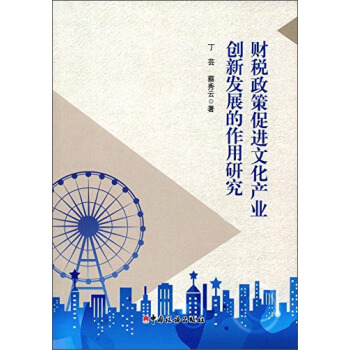
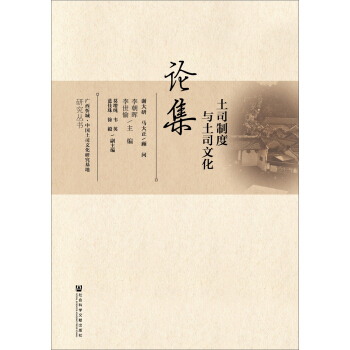
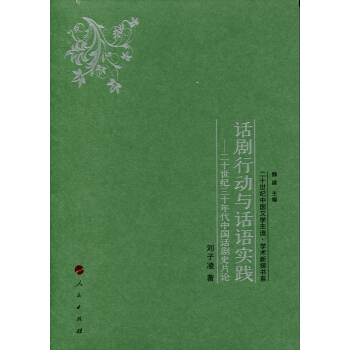
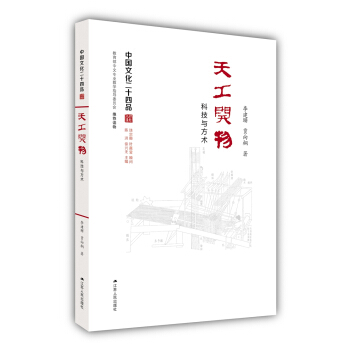
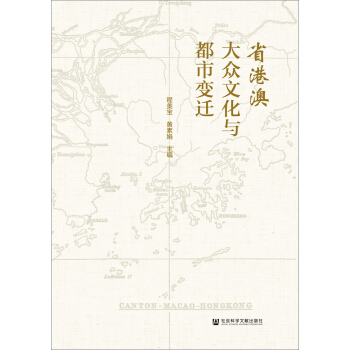
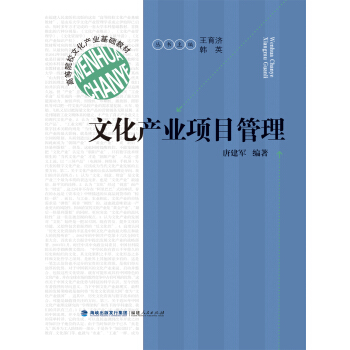
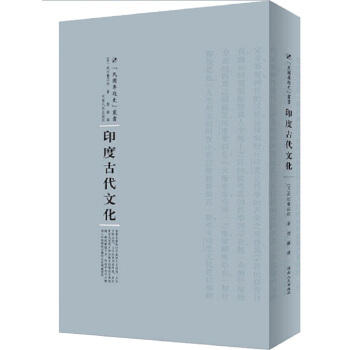
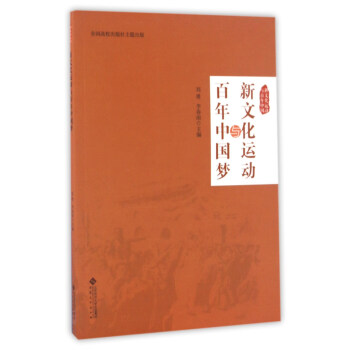
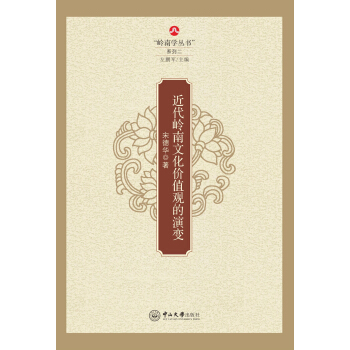
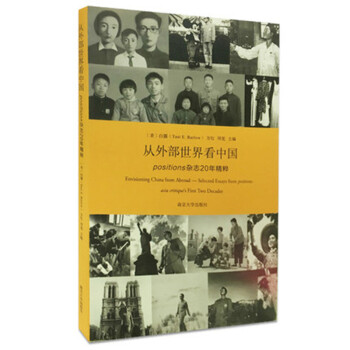
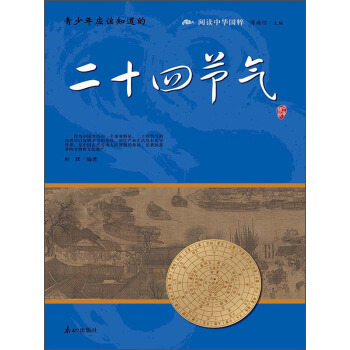

![創意産業園區區域協同機理研究/海派時尚與創意經濟係列叢書 [The Research Regional Synergetis Mechanism Of Creative Industry Park] pdf epub mobi 電子書 下載](https://pic.tinynews.org/12057632/58245346Nd181a915.jpg)
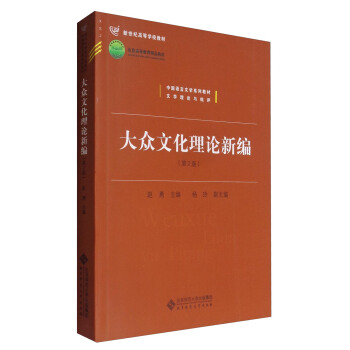
![體驗世界文化之旅閱讀文庫:智利 [Chile-Culture Smart!] pdf epub mobi 電子書 下載](https://pic.tinynews.org/12058247/58d87e51N35b846af.jpg)
![體驗世界文化之旅閱讀文庫:博茨瓦納 [Culture Smart!Botswana] pdf epub mobi 電子書 下載](https://pic.tinynews.org/12058249/58d87e51N768c1333.jpg)
![體驗世界文化之旅閱讀文庫:摩洛哥 [Morocco-Culture Smart!] pdf epub mobi 電子書 下載](https://pic.tinynews.org/12058273/58e5e5ccNfa942022.jpg)
![體驗世界文化之旅閱讀文庫:印度 [Culture Smart!India] pdf epub mobi 電子書 下載](https://pic.tinynews.org/12058279/58d87e51N7eac73e0.jpg)
